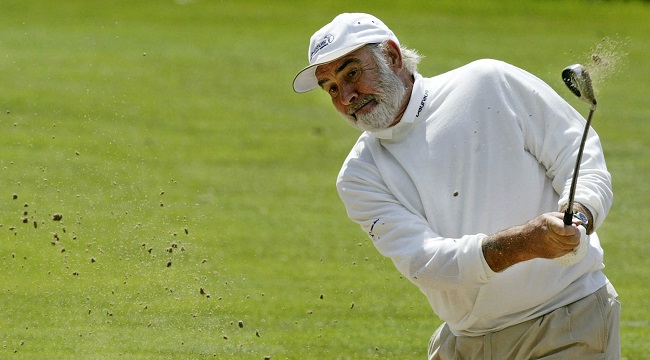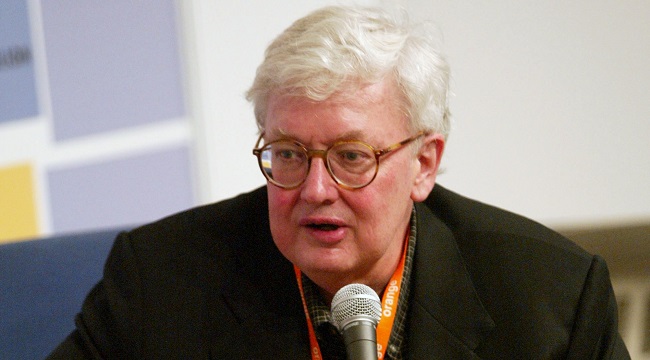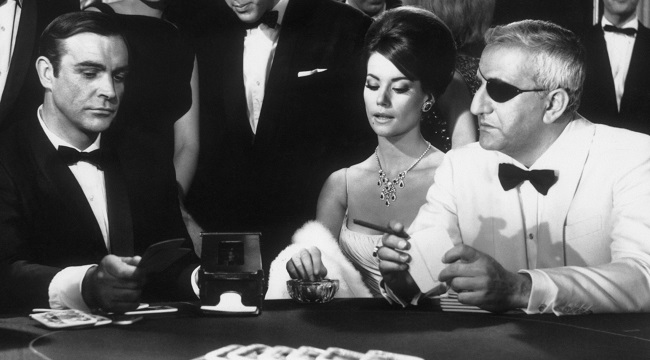More than fanny packs and Furbies, the ’90s are best remembered for its many classic films, and the best of these were its decade-defining action films. From Terminator 2: Judgement Day to Starship Troopers and Independence Day, if it didn’t involve massive explosions, spectacular special effects, and intricate stunts, then it was long forgotten by moviegoers. And one of the best films of the era is The Rock, the 1996 action film starring Sean Connery and Nicolas Cage, produced by Jerry Bruckheimer and the late Don Simpson, and directed by Michael Bay. Along with the likes of Con Air and Armageddon, it arrived near the beginning of Cage, Bruckheimer and Bay’s action movie renaissance that would shape the rest of that decade and the next.
To celebrate The Rock‘s 20th anniversary, check out these fascinating facts about its production, reception, and lasting cinematic legacy.
Arnold Schwarzenegger, Chemical Specialist
Before Academy Award-winner Cage left Las Vegas for the beautiful cliffside views of Alcatraz, another, more action-prone actor was considered for the role of FBI Chemical Specialist Stanley Goodspeed — Arnold Schwarzenegger. Yes, the man who instead opted for Eraser and Jingle All the Way was presented with an incomplete, 80-page script an offered the Goodspeed part to boot. He turned it down because it wasn’t “fully baked,” but later admitted Cage and company had done a “fantastic job.”
William Forsythe And The Hot Dog
Sure, William Forsythe’s Ernest Paxton isn’t the biggest part in The Rock, but he gets enough face time with Cage, Connery and most of the other major and minor players that one would assume his constant presence on the set was a necessity and that he was a recognized member of the cast. Wrong. As the actor recalled in an interview years later, a caterer tried to chase him off the premises because she mistook him for an extra while he was eating a hot dog: “She comes running over to me and she goes… ‘Extras aren’t allowed hot dogs!’ And I thought about it for a second, then I just looked at her, and I smiled and said, ‘Well, I’m going to have it anyway.'” The woman called security, who recognized Forsythe and let him have his hot dog.
Connery’s Golf Getup

Bay fought many battles throughout production on The Rock, and many were with executives at Walt Disney who didn’t like what he was doing with the movie. On one particular occasion, as told by the director on his commentary track for the film’s Criterion Collection DVD, he had to leave the set for what was supposed to be a volatile meeting with the some suits. Enter Connery, adorned in full golf attire, who offered to accompany Bay to the meeting without asking what it was for. What proceeded was a room full of surprised executives sitting in silence while the aged actor defended Bay’s work on the film in his signature Scottish brogue.
Aaron Sorkin, Script Doctor
A lot of writers worked on the script for The Rock between its original inception and the distributed cut. The bureaucratic process for assigned credit per the Writers Guild of America’s arbitration process led to a very public fight between them and Bay (which we’ll get to below), but one of the more surprising bits of trivia concerns some of those hired script doctors. Frequent Connery collaborators Dick Clement and Ian La Frenais came on to improve the Scottish actor’s dialogue and a few other tidbits, but according to co-writer David Weisberg, it was A Few Good Men and The American President writer Aaron Sorkin who “wrote great dialogue” at the last minute.
Bay Fought The Law (Of The WGA)
About that tussle between Bay and the WGA: It revolves around a scuffle between the director and the guild over the perilous nature of The Rock‘s many written iterations and who would get credit as the film’s scribes. Per the WGA’s arbitration process, writing partners David Weisberg and Douglas F. Cook, and solo writer Mark Rosner were given credit for writing the film’s script. As for the story credit, that distinction was also awarded to Weisberg and Cook. Left out of the mix was Jonathan Hensleigh, who wrote the shooting script and worked closely with Bay throughout production. In response, Bay wrote an open letter to the guild calling the arbitration process “a sham, a travesty” and an embarrassment. Weisberg and the WGA disagreed, and the decision remained unchanged.
Michael Bay’s ’90s Cinematic Universe
A decade before Marvel Studios fleshed out its plans for a cinematic universe with Iron Man and The Incredible Hulk, one of Bay’s repeated casting choices inadvertently connected two of his movies in a similar manner. In The Rock, Stanley Anderson played the President of the United States (pictured above) in what was ultimately an uncredited role. However, two years later Anderson garnered the credit for what could be argued is the same role in Armageddon, Bay’s next action blockbuster. In other words, both films’ fictional disasters were overseen by the same American president.
Roger Ebert And The Criterion Collection

A few entries earlier, a reference was made to Bay’s commentary track on a Criterion Collection DVD edition of The Rock. This was not a typo. While the organization typically selects classic and arthouse films for preservation on LaserDisc, DVD, and now Blu-ray editions, The Rock was selected for the esteemed collection in 2001. It’s by no means a “classic” or “arthouse” film, but it is a stellar piece of action cinema, which is why the late Roger Ebert came to its defense. “It’s made out of pieces of other movies,” he wrote in 2001, “but each element has been lovingly polished to a gloss… The movie is a triumph of style, tone, and energy.”
The James Bond Fan Theory To Rule Them All

Connery’s character is named John Patrick Mason, but aside from a few breadcrumbs of information dropped by Womack, various suits and Mason himself, the audience never truly knows who or what he is. “This man has no identity, not in the United States or Great Britain. He does not exist,” Womack snarls at one point, adding: “The British claimed they’d never heard of him. And we held him without trial, until he gave up the microfilm. But he never did.” The microfilm, it turns out, includes some series secrets held by American intelligence, and seeing as how Mason was trained by “British intelligence,” these clues have left many fans to wonder — Is Connery playing an older version of James Bond? It’s a very popular fan theory that cropped up when the film was first released, and 20 years later, many still believe it.






